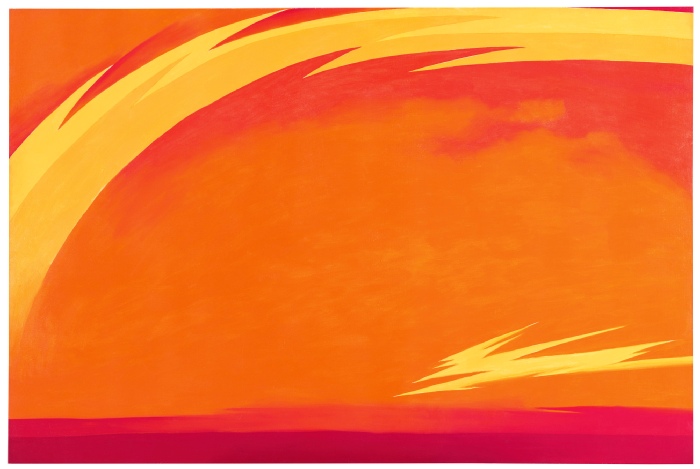Press Release
The Schirn Kunsthalle Frankfurt is dedicating an extensive thematic exhibition to the fascination with wilderness from modernity to the present. Over 100 important and impressive artworks by 34 international artists are presented, including Julian Charrière, Ian Cheng, Marcus Coates, Tacita Dean, Mark Dion, Jean Dubuffet, Max Ernst, Camille Henrot, Asger Jorn, Per Kirkeby, Joachim Koester, Ana Mendieta, Georgia O’Keeffe, Gerhard Richter, Henri Rousseau, and Carleton E. Watkins.

Wilderness
Schirn Kunsthalle Frankfurt (Germany)
01.11.2018 - 03.02.2019

At a time when most of the blank spaces on the map of this world have largely disappeared and an “untouched state of nature” almost only still exists in the form of designated conservation areas, wilderness has once again become a focus in art. The search for the last free places, expeditions as an artistic medium, and visions of a post-
Esther Schlicht, the curator of the exhibition, about the exhibition: “In the case of wilderness as a topic, we have always also been dealing with images and projections in which the fears and longings of a self-
In the traditional meaning of the word, wilderness denotes locations and instances that deny human access and in which nature is left to itself. In occidental history, wilderness as a cultural concept has always been constituted above all as an alternative model—in contrast to the spheres of the cultivated, the domesticated, or of civilization. It was only in the course of the eighteenth century that the Western concept of wilderness increasingly changed from a terrifying, threatening alternative world beyond human control into a positive utopia that then, conversely, was confronted with civilization as a threat. In connection with this, wilderness as an epitome of the sublime developed into an aesthetic category that, mediated by Romanticism, is still in use today. Abstract and ambiguous as the term wilderness at first seems, it nevertheless also directly gives rise to concrete pictures and associations that are rooted in the collective consciousness and perpetuate the legacy of Romanticism. The artistic examination of pictures and motifs of a disappearing wilderness today also always makes reference to a historical tradition. Against this backdrop, the exhibition is not first and foremost dedicated to the topic of wilderness in terms of iconography, but instead interrogates the relationship between wilderness and art in the 20th and 21st centuries so as to shed light on it from current perspective. The exhibition develops as a thematically conceived dialogue between contemporary and historical works—paintings, photographs, graphics, video and sound works, sculptures, and installations.
All the artists in the exhibition: Darren Almond, Karel Appel, Hicham Berrada, Frères Bisson, Julian Charrière, Ian Cheng, Marcus Coates, Constant, Tacita Dean, Mark Dion, Jean Dubuffet, Max Ernst, Joan Fontcuberta, Luke Fowler, GUN (Group Ultra Niigata), Camille Henrot, Pieter Hugo, Asger Jorn, Per Kirkeby, Jacob Kirkegaard, Joachim Koester, Richard Long, Heinz Mack, Ana Mendieta, Helmut Middendorf, Georgia O’Keeffe, Richard Oelze, Gerhard Richter, Briton Rivière, Henri Rousseau, Lin May Saeed, Frank Stella, Thomas Struth, Carleton E. Watkins.
The exhibition Wilderness is supported by the Dr. Marschner Foundation and the Verein der Freunde der Schirn Kunsthalle e. V.
A catalog edited by Esther Schlicht and with a foreword by Philipp Demandt and and texts by Philippe Descola, Karen Kurczynski, Johanna Laub, Cord Riechelmann, Esther Schlicht, and Reiko Tomii as well as artists’ statements and excerpts from historical and literary texts has been published by Kerber Verlag.
Exhibition November 1, 2018 -
Georgia O'Keeffe, From the Plains ll, 1954. Oil on Canvas, 122 x 183 cm. Museo Thyssen-


© ArtCatalyse International / Marika Prévosto 2018. All Rights Reserved